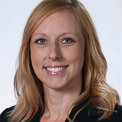According to the American Foundation for Suicide Prevention (AFSP), suicide is the tenth leading cause of death for Americans [1]. Physicians have the highest suicide rate of any profession, with roughly 300 to 400 physicians committing suicide each year. AFSP reports a staggering difference in suicide rates in physicians for both men (70% higher) and women (400% higher) relative to their counterparts in other professions. In a study comparing burnout and suicidal ideation with medical students in seven different medical schools, Dyrbye and his colleagues found that approximately 50% of students experienced burnout, and 10% experienced suicidal ideation during medical school [2].
Let’s not be one of these statistics.
COM-P students’ reasons for reluctance to seek help were somewhat similar to national data from the AFSP. In a previous survey I conducted with our student leaders (n = 40), 21% reported inability to admit they needed help, 19% feared stigma, and 17% had time constraints. A close fourth reason (14%) was not knowing how to ask for help, indicating students may not have ever needed to ask for help. In addition, some of my talks with students suggested a pressure to be “perfect” and all-knowing and feelings of being the only ones struggling in comparison to their classmates.
Well, you are not alone, and students are getting help—95% of all students have seen their learning specialist at least once (if not many more times), and over half have seen their career advisor. The tutoring program has increased approximately 142% in the last three years based on student needs and requests, and tutoring applications grew 3 times from last year. In addition, over 30% of our student body have met with one of our school psychologists. It is common, normal, and expected that students get the help they need to be successful.
Seeking the appropriate resources for help is one way of coping with medical school stressors. Data from a study of 69 third-year medical students similarly showed that proactive coping or engagement strategies, including social support (help-seeking), showed a negative correlation with depression [3]. In addition, Tartas, Walkiewicz, Majkowicz, & Budzinski found specific factors related to effective coping mechanisms, such as seeking guidance proactively in the first two years of medical school, predicted higher satisfaction with students’ chosen field of specialty, thus indicating learning to cope or seek help early on could also have lasting effects throughout medical school and beyond, as a physician [4]. If we can catch students prior to burnout, when they are in a position to more optimally problem solve, we can begin to educate on resources and normalize help-seeking [5]. In summary, students experiencing burnout, likely have distorted perceptions and are both more in need of help and less likely to seek it out. In my role here, these data match well with what I experience on a daily basis with students. It is critical to catch students early and help them to be proactive in seeking both academic and mental health support.
What does proactive help-seeking look like?
When I went to counseling after my divorce, I was apprehensive for a variety of reasons. My counselor helped me feel comfortable and safe by validating my feelings and helping to ease my guilt and distress in a healthy way. She called my follow-up meetings “tune-up” sessions. This, too, normalized counseling and reminded me that everyone needs a tune up once in a while to keep our engines running smoothly before they shut down.
So, come in for a tune up once in a while, be proactive, go to a workshop to learn new skills, go to a tutoring one-on-one or review session, stop in and say “hi” to your block director (they want you to!). Call it a check in, touch base, venting session, cry time, pop in, or chocolate fix. Either way, we are here for you. Come on in, early and often. Everyone is doing it!
- American Foundation for Suicide Prevention. Accessed 2 November 2015 <https://www.afsp.org/>
Dyrbye, L. N. (2008). Burnout and Suicidal Ideation among U.S. Medical Students. Annals of Internal Medicine, 149(5), 334. doi:10.7326/0003-4819-149-5-200809020-00008 - Dyrbye, L. N., Eacker, A., Durning, S. J., Brazeau, C., Moutier, C., Massie, F. S., … Shanafelt, T. D. (2015). The Impact of Stigma and Personal Experiences on the Help-Seeking Behaviors of Medical Students With Burnout. Academic Medicine, XX(X), 1. doi:10.1097/ACM.0000000000000655
- Mosley, Thomas H., J., Perrin, S. G., Neral, S. M., Dubbert, P. M., Grothues, C. A., & Pinto, Bernadine, M. (1994). Stress, coping, and well-being among third-year medical students. Academic Medicine, 69(9), 765–767.
- Tartas, M., Walkiewicz, M., Majkowicz, M., & Budzinski, W. (2011). Psychological factors determining success in a medical career: a 10-year longitudinal study. Medical Teacher, 33(3), e163–e172. doi:10.3109/0142159X.2011.544795
Stephanie Smith has a master's degree in counseling and will graduate with her Doctor of Education degree in May 2016 from Arizona State University. She has worked in student affairs for over 18 years in a variety of educational settings. She grew up in the suburbs of Chicago but moved to Arizona in 1999. She thoroughly enjoys working with her students at UA COM-P as the director of student development.


